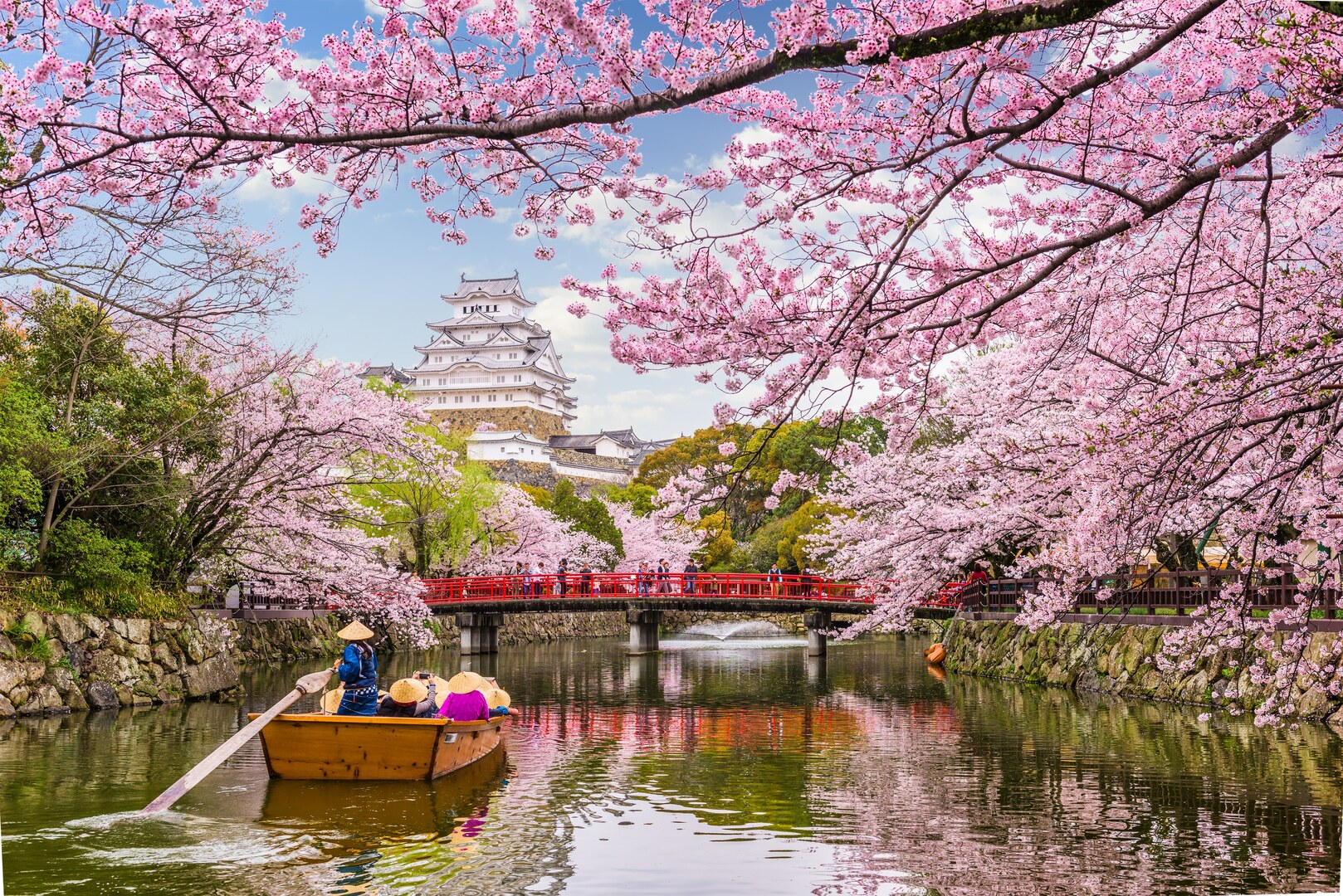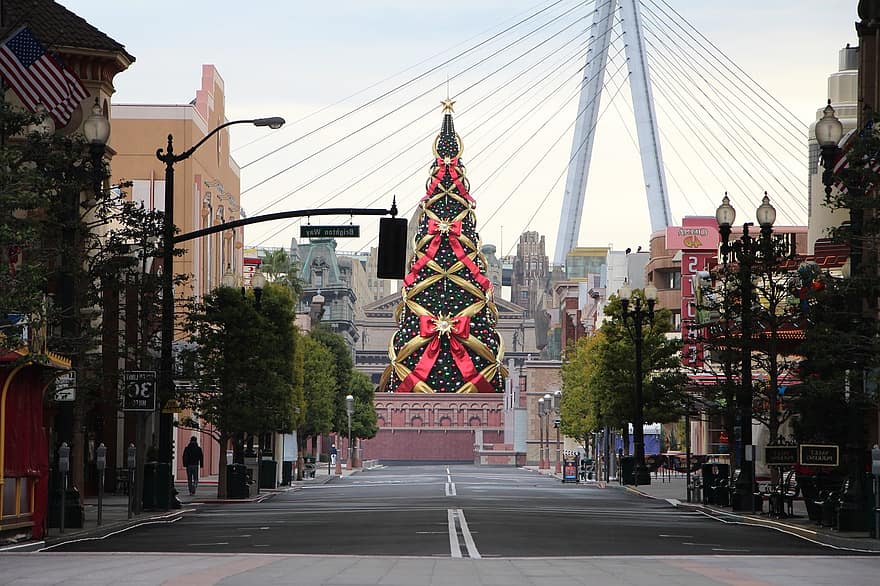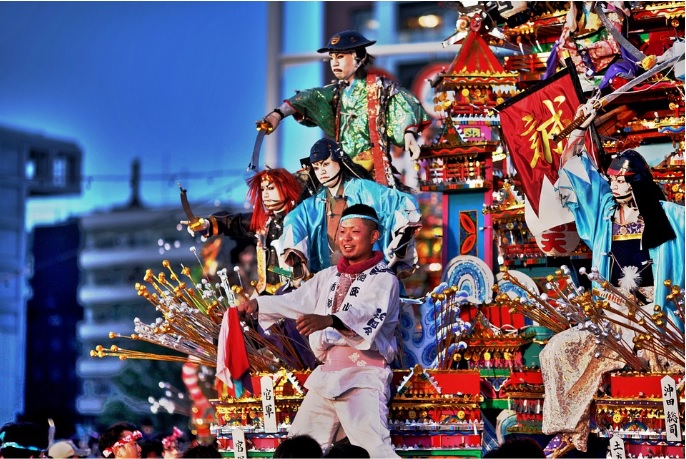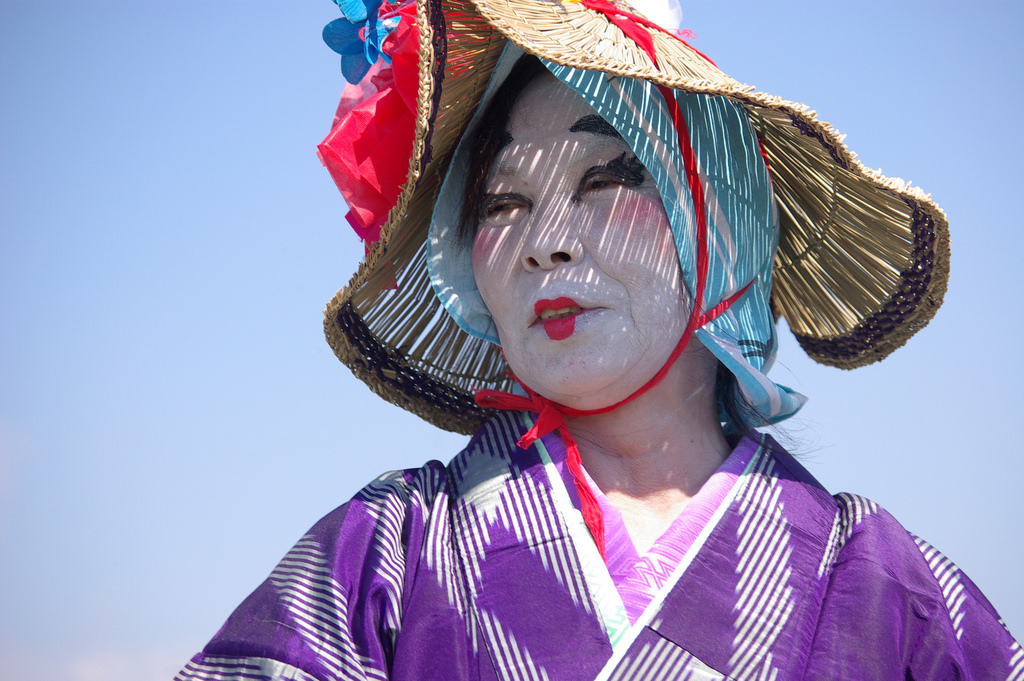
Remember the Japanese commercial where “schoolgirls” in the classroom turned out to be boys? What about Nicolas Cage endorsing a Japanese pinball machine? Japanese advertisements sure has its quirks. And it doesn’t stop there.
In our time of modernity today, we associate advertising with commercials on television, over the radio and even online. With these technological innovations, it has become easier for products to be promoted. Did you ever wonder what they did before all of these advancements?
Introducing chindonya, your traditional Japanese advertising.
What is Chindonya?
Chindonya are elaborately-costumed Japanese street musicians who—you guessed it—advertised shops! Their costumes ranged from kimonos, to princess outfits, to samurai garb. These performers advertised the opening of new stores or special events such as big price drops. Chindonya is also known by its old names, hiromeya and tozaiya.
The term chindonya consists of the words chin and don which are the sounds of the instruments used in the act, and ya, which is the equivalent of the suffix er in English, which means “a person that does something,” like the writer, banker, and others.
The instruments used by chindonya performers can include a set of wadaiko drums, clarinets, trumpets, shamisen, and accordions.
Origin
Solo Performers
During the late Edo Period and the early Meiji Period, performers associated with the concept of Chindonya appeared in Osaka. But instead of being in a group, they were solo performers. The first known Chindonya was a candy seller named Amekatsu.
Groups
In Tokyo, the Hiromeya group was founded. They figured out that one-man bands did not work in Tokyo as well as it did in Osaka. This gave birth to the group performers of chindonya. The groups had more than ten members joining the fun. As the Hiromeya business gained popularity, they were even invited to perform at the burial of Emperor Meiji in 1912.
Evolution
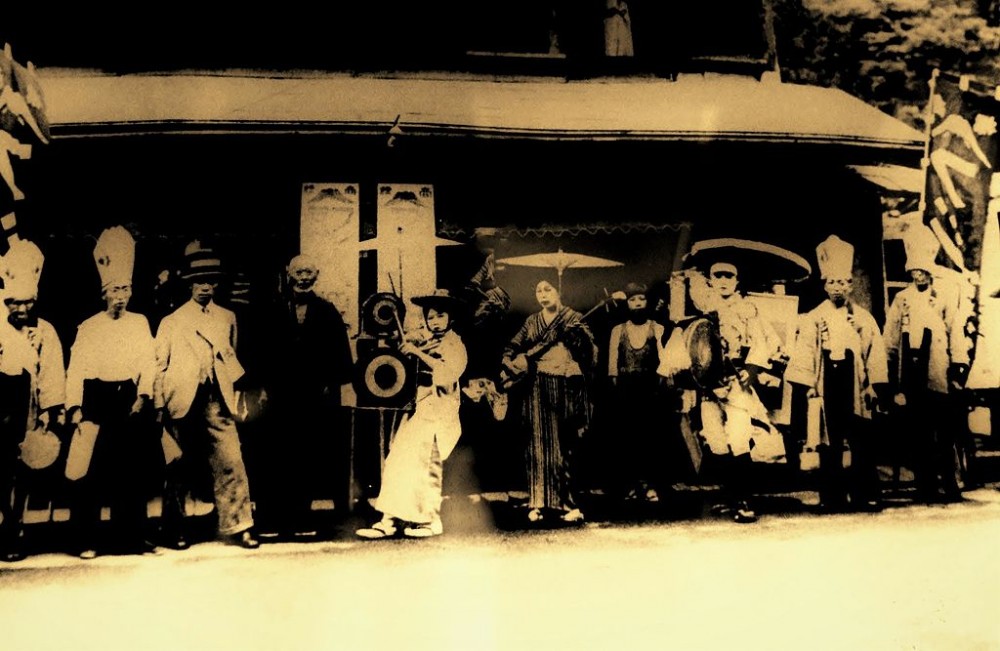
In the 1920’s, with the rise of print advertisements on newspapers, and the appearance of sound film in Japan, the use of chindonya experienced a decline. Chindonya groups reduced their members from three to four, leading to many becoming unemployed. Chindonya were also considered to be of low status in society, and for many, it was the last step before becoming totally jobless and living in poverty.
Meanwhile, in 1946 to 1956, chindonya saw a revival and this marked the golden age of Chindonya. During this time, there were more than 2,000 chindonya performers all over Japan.
Present-Day Chindonya
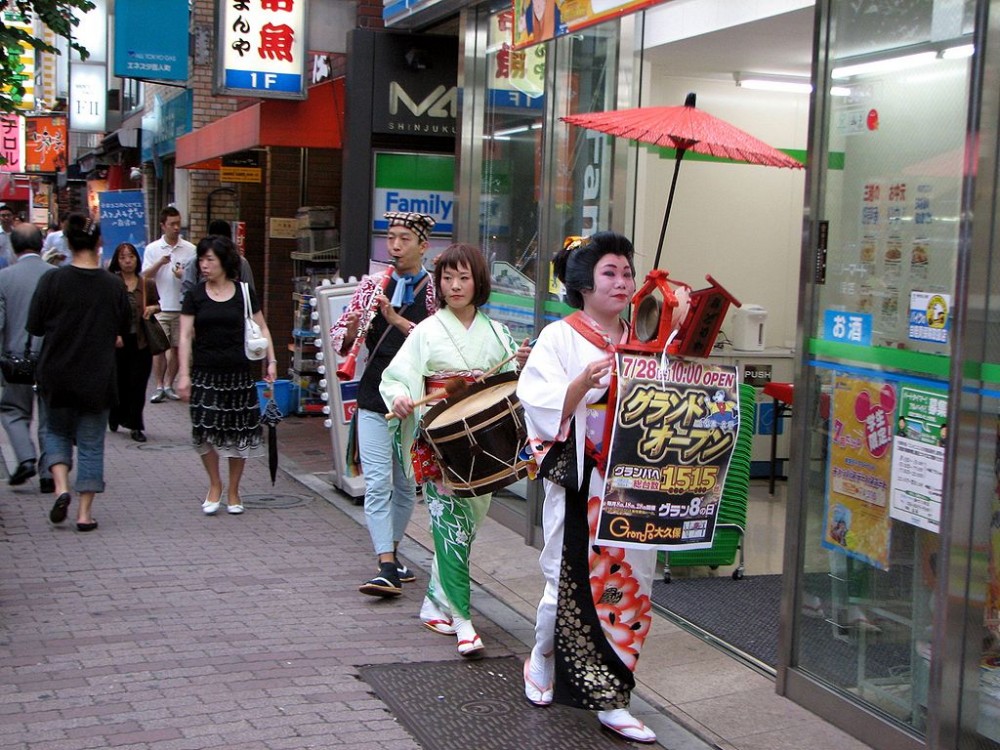
Photo by Chris 73. Licensed under Creative Commons.
Today, Chindonya has not come back to its former glory, but is definitely surviving. College-educated entrepreneurs have learned the trade from the seasoned performers and set up their own groups. As of now, there are about 25 full-time Chindonya groups. There are also student and amateur groups.
In the sea of advertisements hounding people everyday, chindonya has created an appeal that definitely stands out. This could be because of the more personal and more direct relationship created between the chindonya performers and its audience. It’s a refreshing, yet age-old tradition that will surely last in the many years to come.
Sources:
